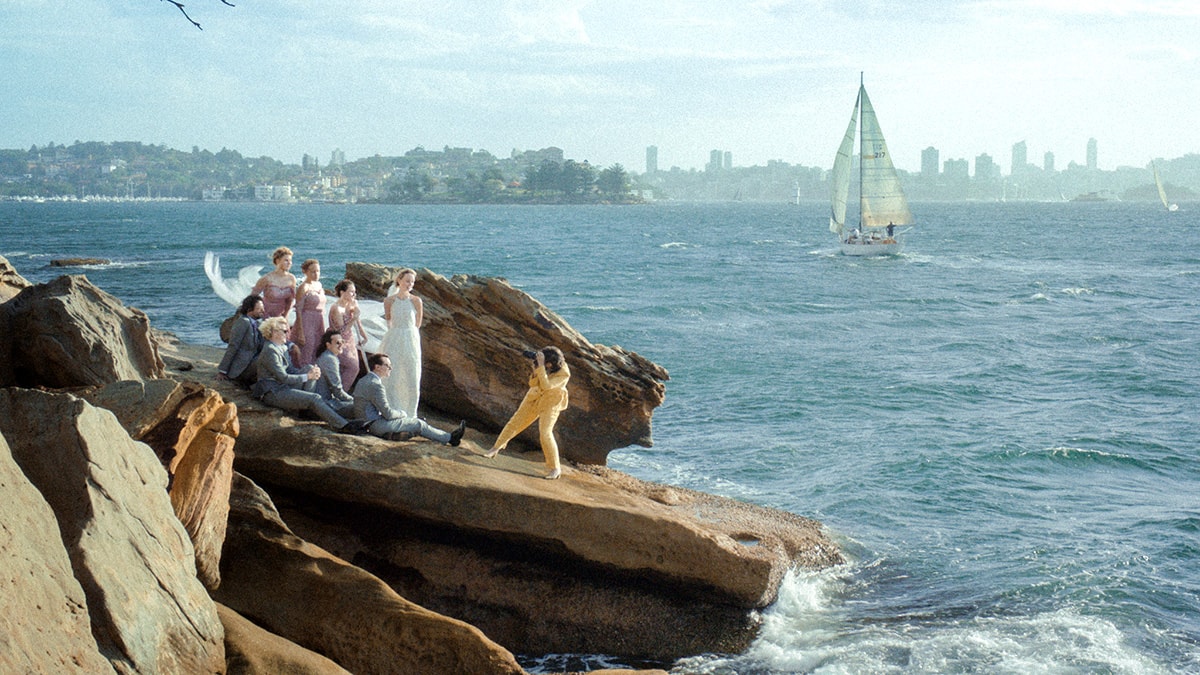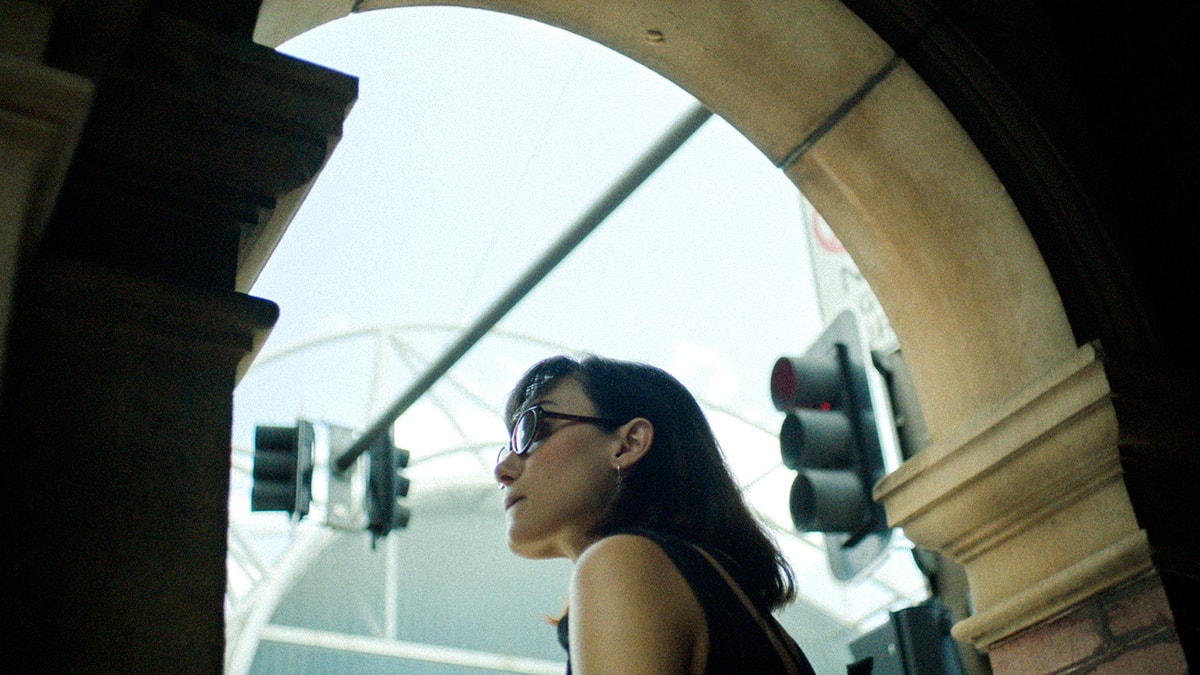As ever-changing Australian Iconography is scattered across every wall, Friends and Strangers poses the question, what if it begins to stare back?
Shown through Sydney filmographer Ray’s (Fergus Wilson) eerie and awkward world, Friends and Strangers turns the mundane into the interesting. Upon meeting Alice (Emma Diaz), the two embark on a soul searching journey in the caverns and sanctuary of rural New South Wales. However, as the gravity of their happenstance starts to sting, the two find themselves questioning their pasts as they fear for their future.

The existential dread of their inner turmoil hangs across the empty spaces throughout the film. With sparse visuals and dialogue, Friends and Strangers builds an uncomfortable tension that lingers as the story becomes more haunting. The film is less introspective and more surreal, taking on narrative shifts like that of the exciting and hectic 2020 dark comedy Black Bear. Except, where Black Bear takes the opportunity to focus on the uncanny, Friends and Strangers uses it to stare Australian culture in the eyes. Riddled with images of Monarchy, Colonialism and Australian Indigenous figures, their emerging presence is paralleled with Ray’s declining state as the gravity of his whiteness remains a conflict.
However, the film takes an awkward stance on the issue, muddling its ability to be understood. The clear critique of class and racialized power within Australia fails to transform beyond surface value. Hanging like a painting on a wall, Friends and Strangers manages to acknowledge the social discomfort of white privilege without making a substantial critique of it. What is intriguing about the film is that it draws connections between Indigenous issues and white privilege without actually acknowledging or exploring the dynamic itself. This makes it incredibly hard to gauge the film’s stance on the subject as it shines a light on it without explicitly stating what the film is trying to say about it. Instead, images are scattered across frames, leaving the audience to draw their own conclusions. Potentially, this exploration would have been better in a different narrative, but within this context, it seems topically added to add texture to an otherwise minimalist film.

Friends and Strangers doesn’t take the conventional route in exploring inner turmoil and relationships. No one within the film has a particularly strong connection to anything or anyone; the characters weave in and out of each other’s lives so flippantly that relationships amount to nothing. The sense of building, followed by unfulfilled expectations, makes this film linger as it builds precedence for nuance and topical discourses without ever following through. The teasing finish to an otherwise climactic film leaves the viewer pining for more and demanding answers.




COMMENTS